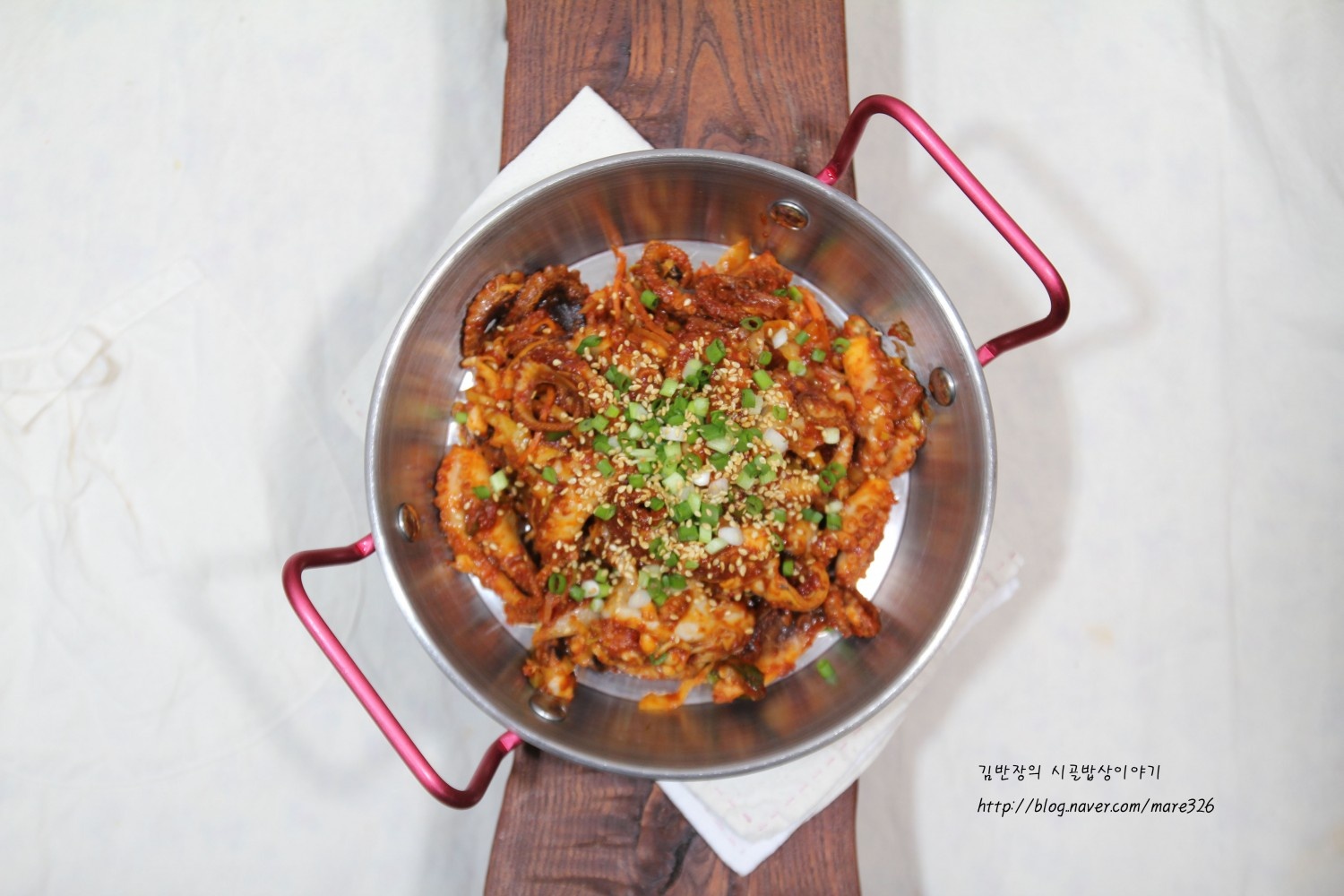
Spring season, super fast spicy jugumi stir-fry without water
It's a little past the jjukumi season, but jjukumi still tastes good.
I made stir-fried webfoot octopus that is soft and chewy without moisture.
It's very good as a side dish and a side dish for alcohol.
4 serving
Within 30 minutes
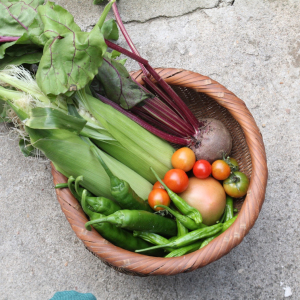
어부동김반장
- Ingredients
-
-
Webfoot octopus8ea
-
Cabbagelittle
-
Carrot1piece
-
onion1ea
-
crushed garlic1spoon
-
leek1piece
-
Cheongyang red pepper3ea
-
red pepper paste1spoon
-
Red pepper powder3spoon
-
thick soy sauce2spoon
-
Sugar1spoon
-
canola oil4spoon
-
- Cooking Steps
-
STEP 1/9I prepared jjukumi as a creature.
You can prepare the freezer.
I prepared the vegetables in the refrigerator, so you can add mushroom types.
Cut the green onions in a generous amount, and sift the rest into similar sizes.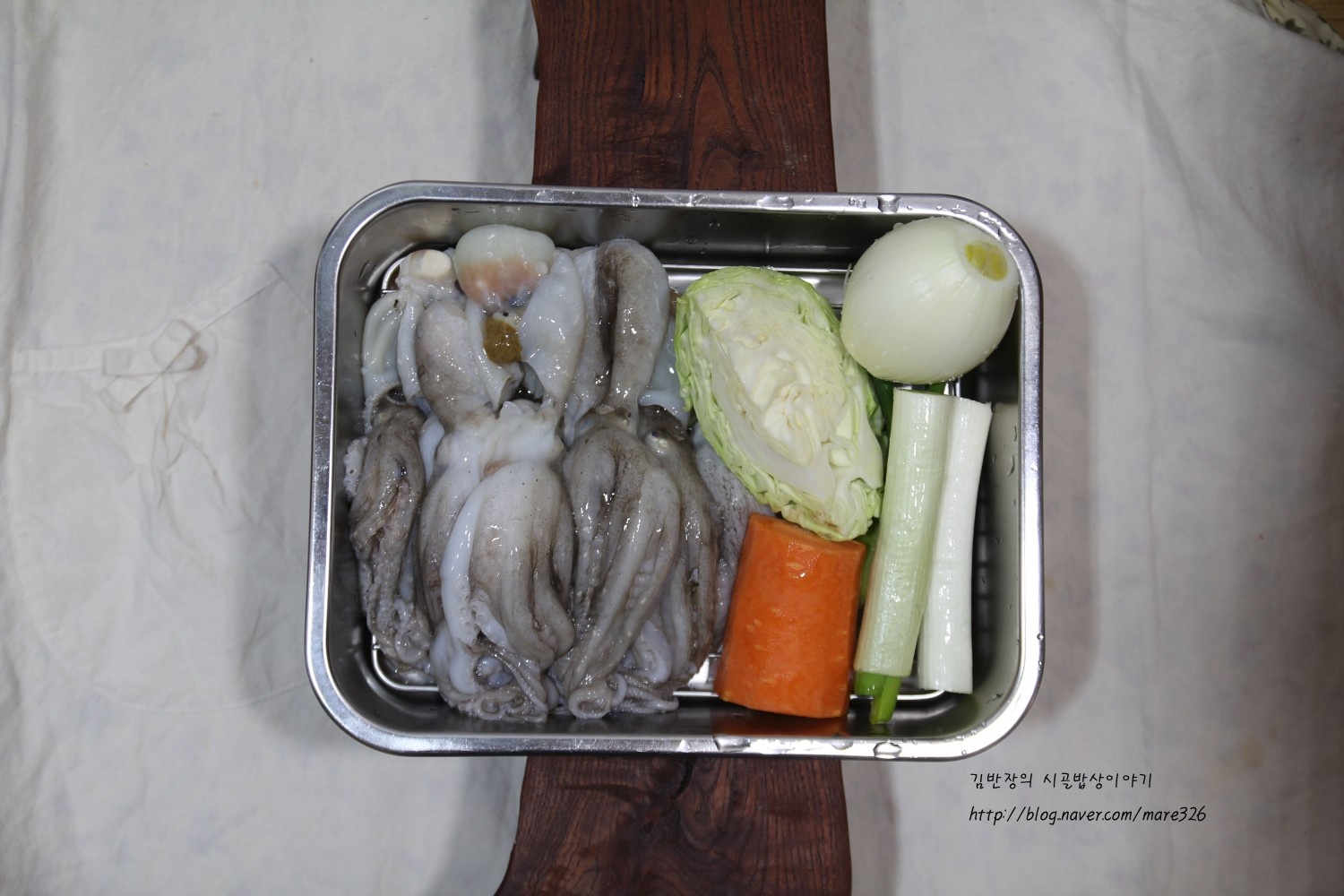 STEP 2/9Wash webfoot octopus with a spoonful of sea salt.
STEP 2/9Wash webfoot octopus with a spoonful of sea salt.
It's a creature, but sometimes the footrest is stuck in it's the day after tomorrow.
Cut the large jjukumi into 4 pieces and the small into 2 pieces.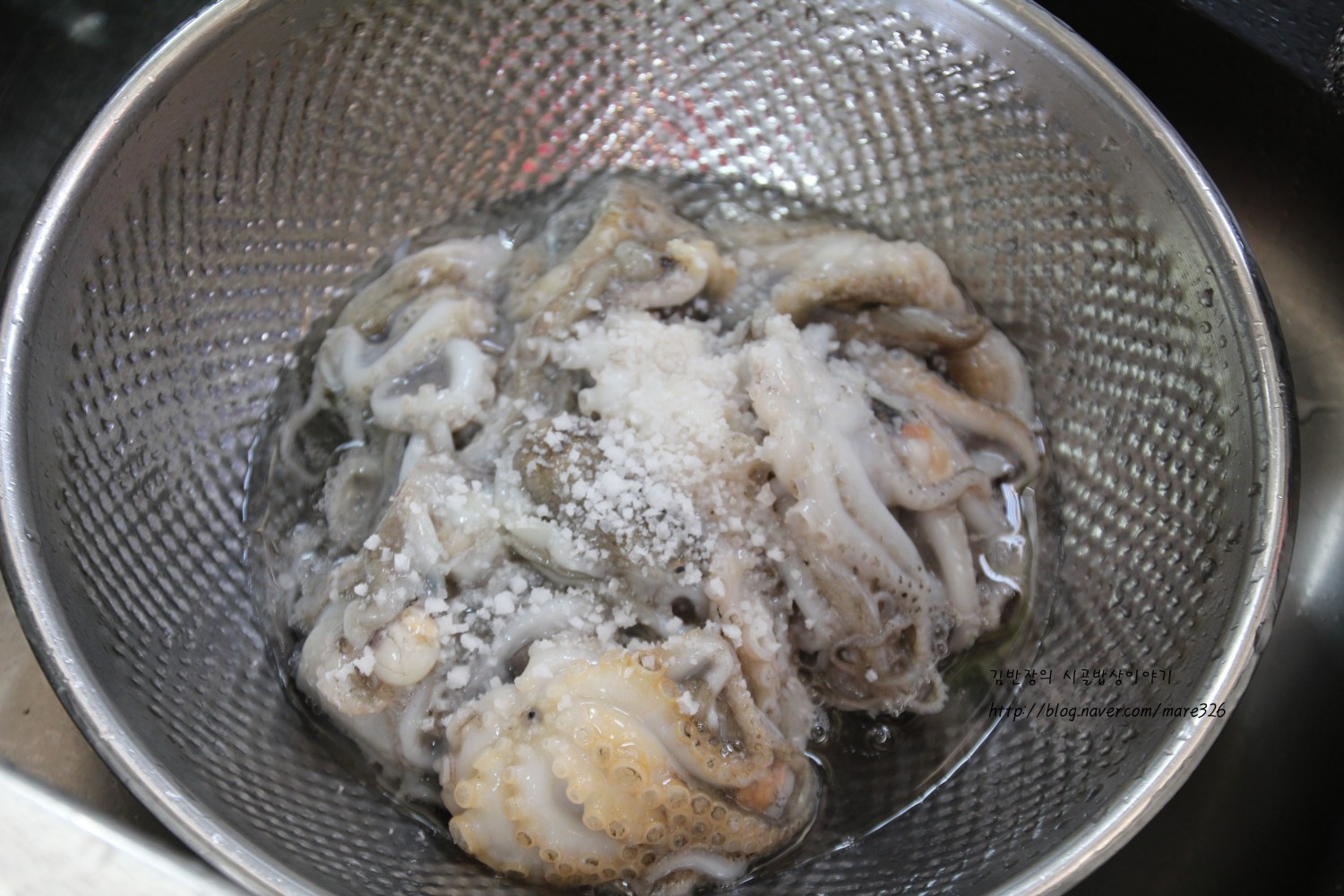 STEP 3/9Boil webfoot octopus in boiling water for 30 seconds
STEP 3/9Boil webfoot octopus in boiling water for 30 seconds
Rinse in cold water and drain.
If you blanch it a little bit, there's no moisture in the stir-fried webfoot octopus, and you can feel the soft and chewy texture of webfoot octopus.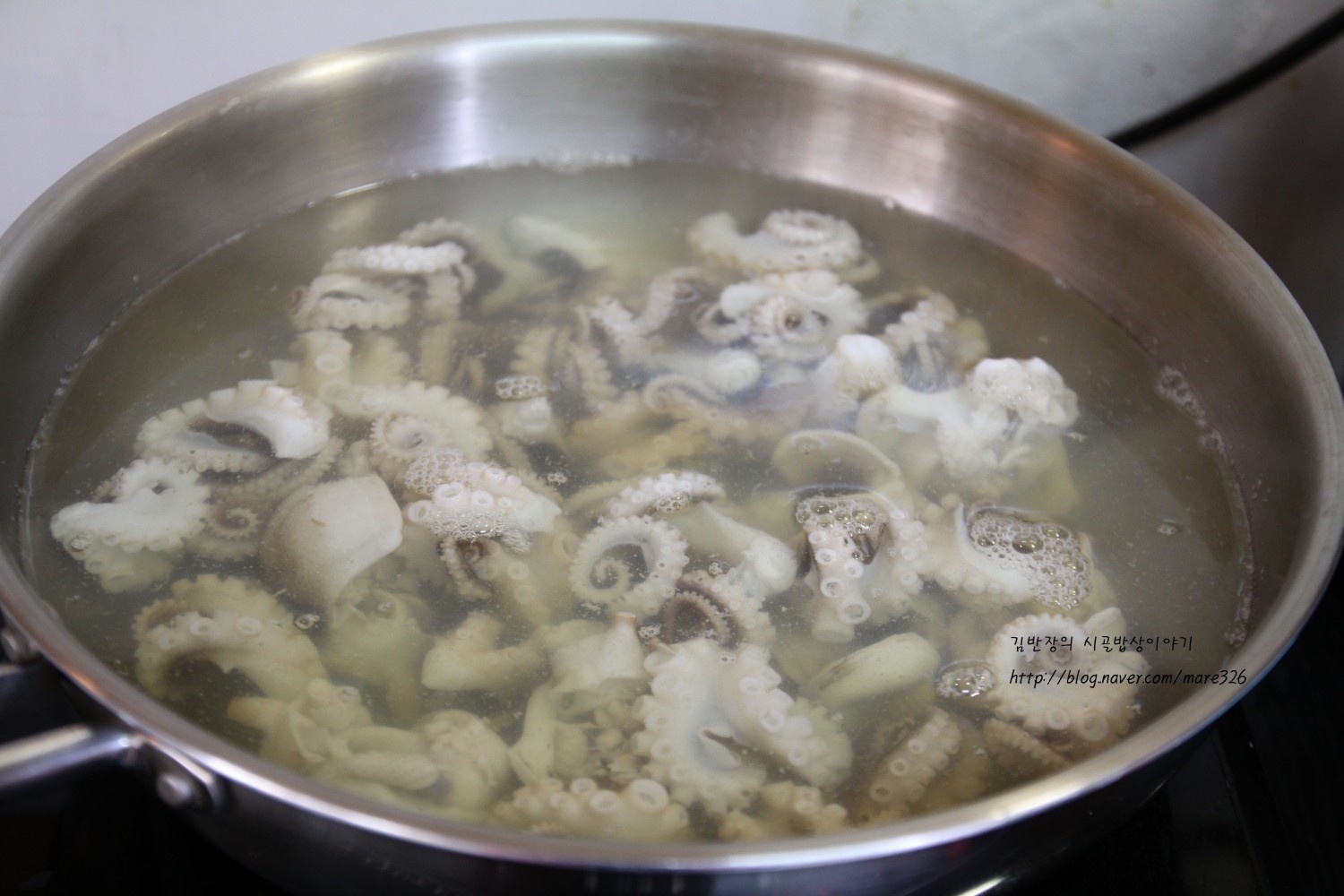 STEP 4/9Pour canola oil in a preheated frying pan, add pine needle green onion, and serve with scallion oil.
STEP 4/9Pour canola oil in a preheated frying pan, add pine needle green onion, and serve with scallion oil.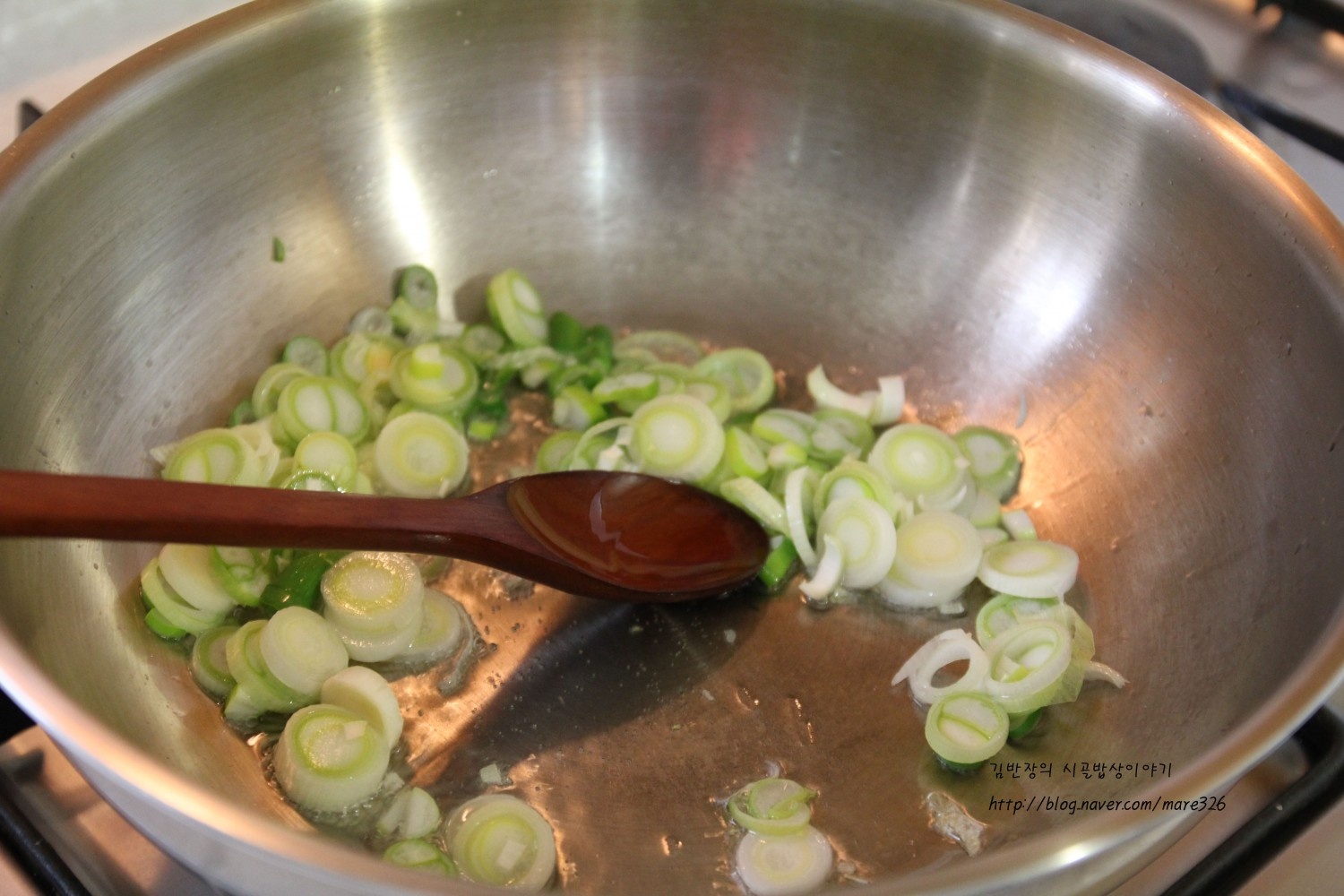 STEP 5/9When the scent of green onion comes up, add 1 spoon of red pepper powder and stir-fry it.
STEP 5/9When the scent of green onion comes up, add 1 spoon of red pepper powder and stir-fry it.
Add minced garlic and stir-fry it.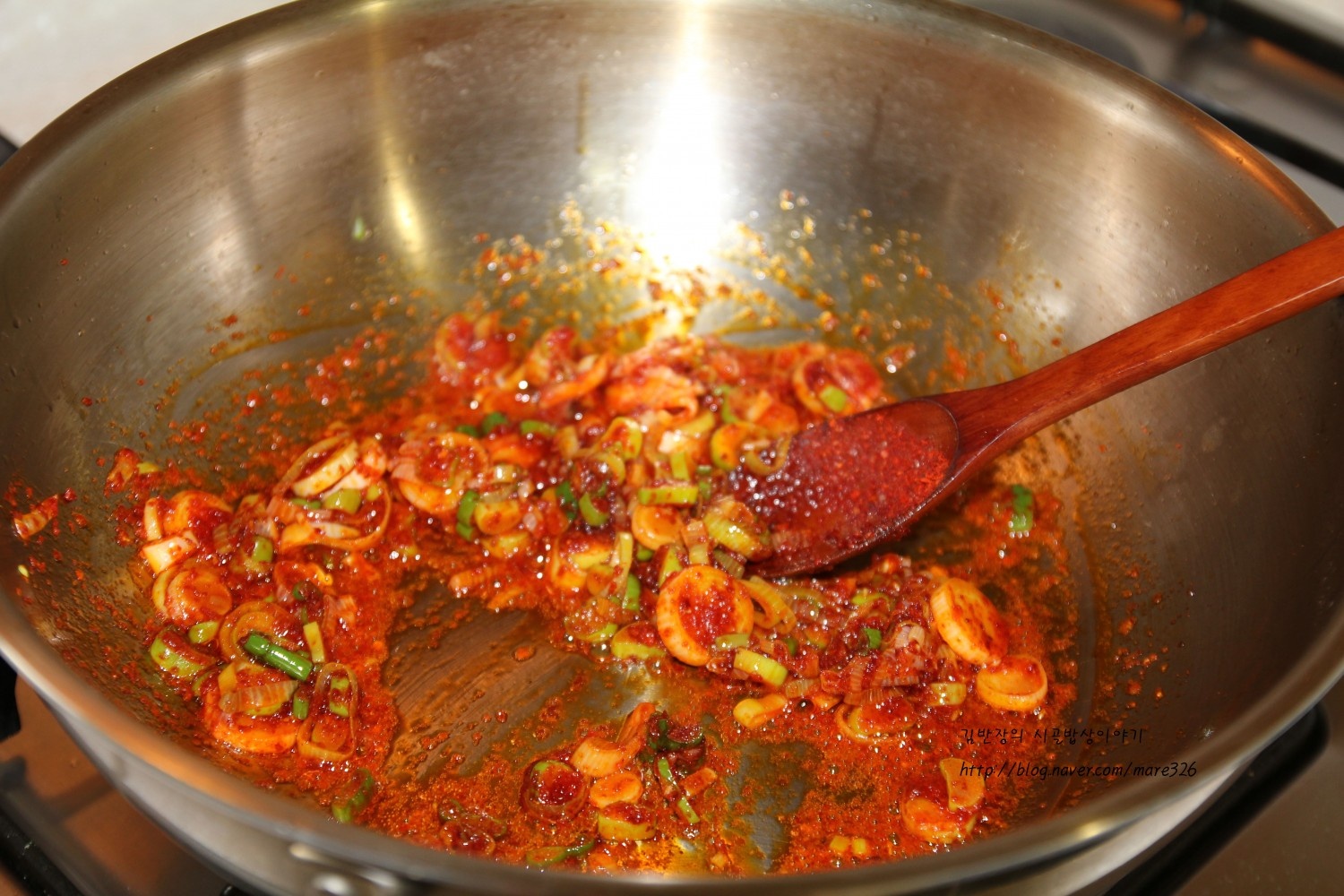 STEP 6/9Add blanched webfoot octopus, 1 spoonful of sugar
STEP 6/9Add blanched webfoot octopus, 1 spoonful of sugar
On medium heat for about a minute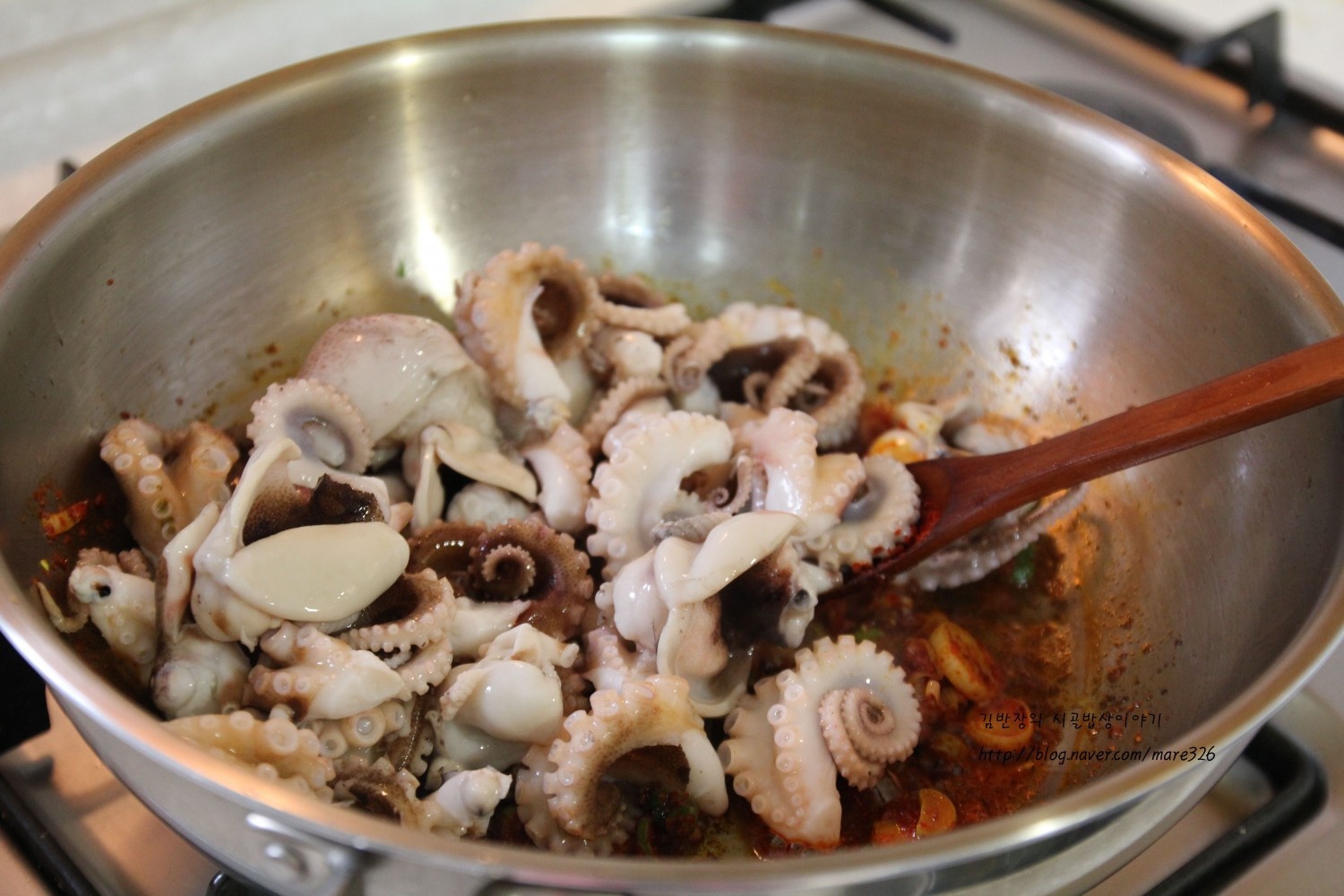 STEP 7/9Add 1 spoon of red pepper paste, 2 spoon of red pepper powder, and 2 spoon of dark soy sauce
STEP 7/9Add 1 spoon of red pepper paste, 2 spoon of red pepper powder, and 2 spoon of dark soy sauce
Whirling STEP 8/9Add the remaining chasod and stir-fry for about 3 minutes.
STEP 8/9Add the remaining chasod and stir-fry for about 3 minutes. STEP 9/9You can use thick soy sauce or salt for the lack of seasoning.
STEP 9/9You can use thick soy sauce or salt for the lack of seasoning.
If you want a spicy taste, you can add about 3 cheongyang peppers.
I tend to eat it bland, so I didn't add extra seasoning.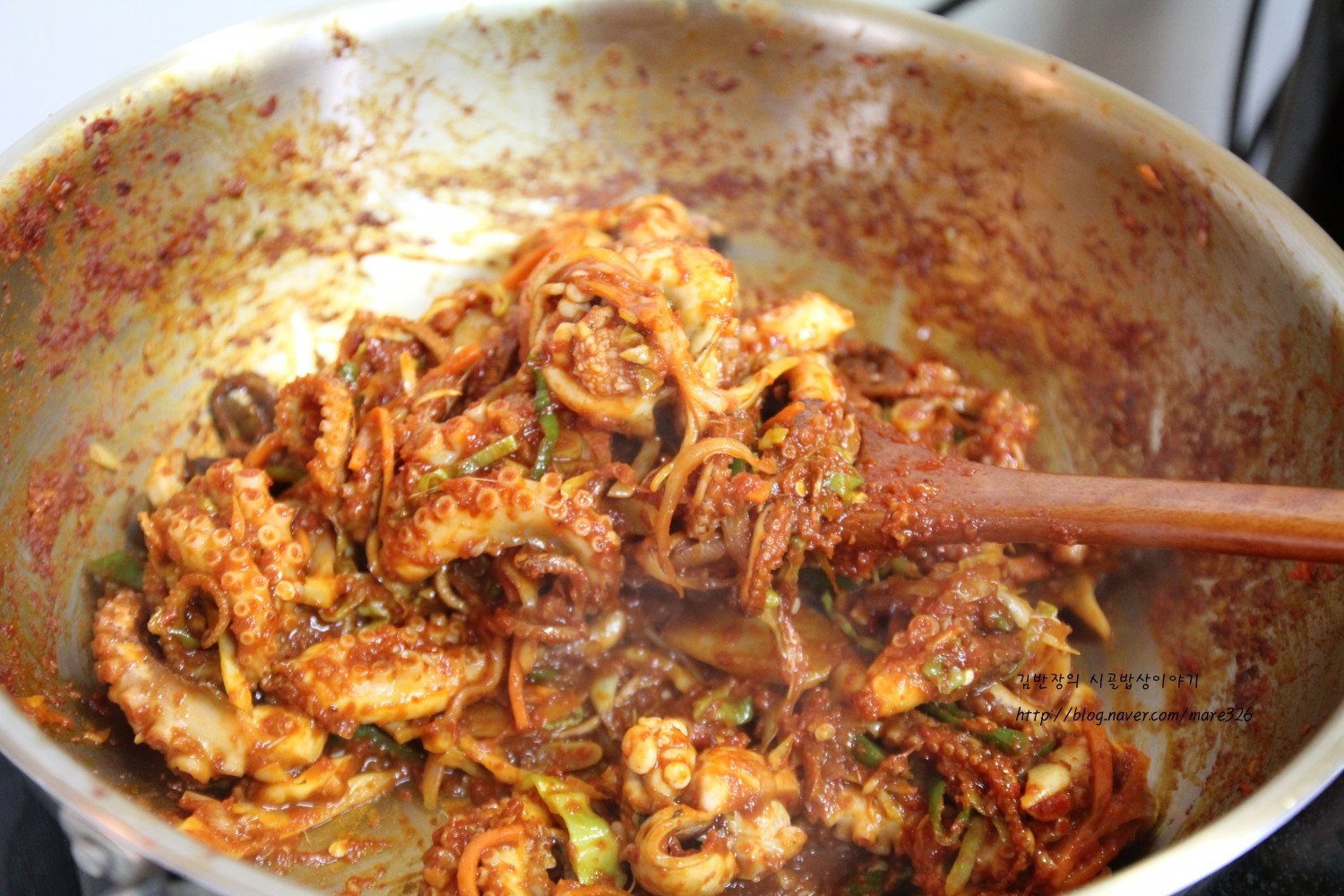 If you boil and cook webfoot octopus, it's good because there's no water in the stir-fried webfoot octopus. The trick is to stir-fry webfoot octopus quickly and quickly. That way, the texture of webfoot octopus is good.
If you boil and cook webfoot octopus, it's good because there's no water in the stir-fried webfoot octopus. The trick is to stir-fry webfoot octopus quickly and quickly. That way, the texture of webfoot octopus is good.
- Cooking review
-
5.00score
-
 171*****scoreIt's easy and delicious I'm going to use this recipe from now on2022-05-15 20:01
171*****scoreIt's easy and delicious I'm going to use this recipe from now on2022-05-15 20:01 -
553*****scoreThank you for the food I'll always use this recipe^^~2021-03-13 23:38
-
- Bulgogi Recommended recipe
-
-
1
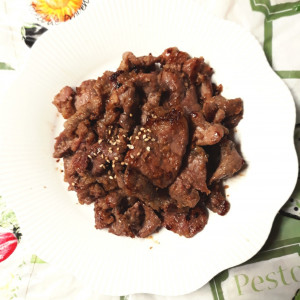 Bulgogi with pork and soy sauce4.97(29)
Bulgogi with pork and soy sauce4.97(29) -
2
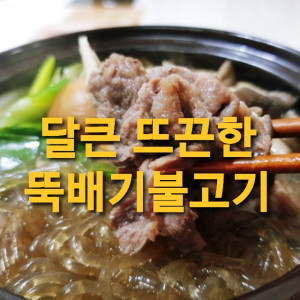 How to make Ttukbaegi Bulgogi :: Have a Ttukbaegi~4.96(24)
How to make Ttukbaegi Bulgogi :: Have a Ttukbaegi~4.96(24) -
3
 10 minutes complete!] Garlic bulgogi, simple and delicious!4.94(144)
10 minutes complete!] Garlic bulgogi, simple and delicious!4.94(144) -
4
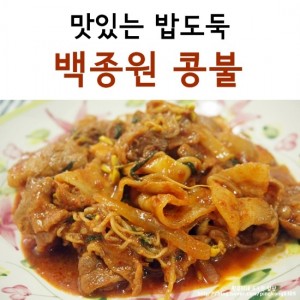 Making bean sprout bulgogi with Jongwon Baek4.90(145)
Making bean sprout bulgogi with Jongwon Baek4.90(145)
-
- Kimchi Recommended recipe
-
-
1
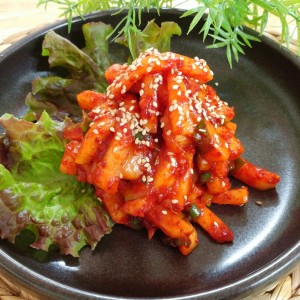 [Simple bossam kimchi] Anyone can do it!4.94(215)
[Simple bossam kimchi] Anyone can do it!4.94(215) -
2
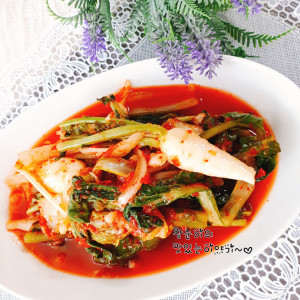 Short soup with young radish kimchi4.98(40)
Short soup with young radish kimchi4.98(40) -
3
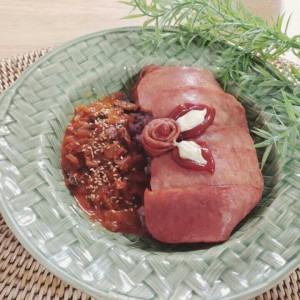 Copy the convenience store ticket, fried kimchi!4.93(118)
Copy the convenience store ticket, fried kimchi!4.93(118) -
4
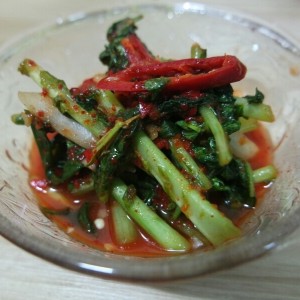 Making Yeolmu Kimchi with Live Information Box4.83(144)
Making Yeolmu Kimchi with Live Information Box4.83(144)
-